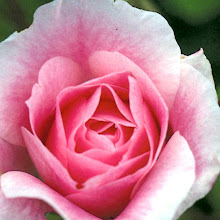Saturday, April 4, 2009
History of Women and Crafts
Crafts were originally born out of necessity and considered "Women's work" either done at home or in the workplace. Women wove cloth, spun yarn, sewed clothing and other household goods. When the industrial revolution happened, machinery was created to mass produce many items that were once handmade. So women's role in society began to change, and so did the role of handcrafted items, moving from necessary tasks to mostly leisure activities.
In the past, different crafts have seen rises and falls in popularity, depending on the state of the economy, social causes, and world events at the time. In the 1950s there was a rise in do-it-yourself projects; the 1970s saw an interest in macrame; in the 1980s decorative painting was all the rage; and the millennium saw the rise of scrapbooking. Through the years needle crafts such as sewing, quilting, cross stitch, needlepoint, crochet and knitting have easily adapted to the tastes of time, and have given these crafts a lasting power that will continue for years to come.
Today, we are in the midst of the "Indie Craft" movement, where people are taking to creating crafts to relax and unplug from today's high-tech world. People tend to prefer the term "crafter" rather than limiting themselves to one category such as needle crafter. They tend to do multiple activities, have a willingness to try new crafts and mix techniques. As much as they want to unplug from technology, they also use this resource to achieve the results they want, learn more about their crafts, get inspired, and/or show off what they created. These crafters also view crafting as a way to express themselves, and show social consciousness.
There is a growing interest in "Green" crafts which are environmentally friendly by either use of recycled materials, easily replenished or sustainable materials, or eco-friendly products. Along with this there is a strong desire for individualism, by customizing a pre-made item to make it one's own or even creating items from scratch. "Indie Crafts" tend to find inspiration from different eras in history, fantasy, movies, music, and the world around them. They view what they are doing as paying homage to the crafters of the past by taking the techniques and applying them in new and interesting ways.
Did you know? The solid colours of DMC Embroidery Floss and Pearl Cotton bear the Oeko-Tex Label, confirming that the dyes used meet human ecology standards with respect to harmful substances.
Shamrock Rose Needlework carries the full line of needlework supplies from DMC, Kreinik, Glissen Gloss, Zweigart, CharlesCraft as well as many other major suppliers.
We also offer 100% Organic fabrics at Shamrock Rose Treasures.
For more information, please visit my other websites, or contact me at:
ShamrockRoseTreasures@gmail.com
www.ShamrockRoseTreasures.com
www.ShamrockRoseNeedlework.flyingcart.com
www.ShamrockRoseGifts.flyingcart.com
www.TeddyBearSupplies.flyingcart.com
We Twitter: www.twitter.com/shamrockroses
Subscribe to:
Post Comments (Atom)

No comments:
Post a Comment